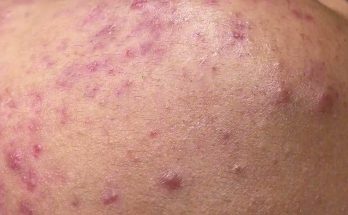
Diabetic foot ulcers are a significant complication of diabetes, representing a considerable burden on individuals’ health and healthcare systems worldwide. Understanding the stages of diabetic ulcers is crucial for timely intervention and effective management.
What is a Diabetic Ulcer?
 A diabetic ulcer is a chronic wound that develops on the feet of individuals with diabetes. These ulcers typically occur on pressure points of the foot, such as the ball of the foot or the heel, and are often preceded by trauma or injury. Due to factors such as neuropathy, peripheral arterial disease, and impaired immune function, individuals with diabetes are more prone to developing foot ulcers. These wounds have a slow healing rate and can lead to severe complications if not properly managed.
A diabetic ulcer is a chronic wound that develops on the feet of individuals with diabetes. These ulcers typically occur on pressure points of the foot, such as the ball of the foot or the heel, and are often preceded by trauma or injury. Due to factors such as neuropathy, peripheral arterial disease, and impaired immune function, individuals with diabetes are more prone to developing foot ulcers. These wounds have a slow healing rate and can lead to severe complications if not properly managed.
How Serious is a Diabetic Ulcer?
Diabetic ulcers are a serious medical condition that can lead to severe complications if left untreated. These ulcers have the potential to become infected, which can result in tissue damage, gangrene, and in severe cases, amputation. Moreover, individuals with diabetes who develop foot ulcers have an increased risk of developing further complications such as osteomyelitis (bone infection) and Charcot foot (a condition characterized by weakening of the bones in the foot). As such, it is essential to take diabetic foot ulcers seriously and seek prompt medical attention at a wound care center if you believe you have one.
Stages of Diabetic Ulcers
Diabetic ulcers progress through distinct stages, each with its own characteristics and implications for treatment. Understanding these stages is essential for wound care specialists to develop appropriate treatment plans and for individuals with diabetes to recognize the severity of their condition.
Stage 1: Pre-ulcerative Lesion
At this initial stage, the skin may appear intact but is at risk of breaking down due to underlying tissue damage. Common signs may include redness, warmth, and swelling in the affected area. Individuals may also experience pain or discomfort, particularly during walking or pressure on the foot. Pre-ulcerative lesions require prompt intervention to prevent progression to a full-thickness ulcer.
Stage 2: Superficial Ulceration
In stage 2, the ulcer extends through the epidermis (outer layer of skin) and into the dermis (deeper layer of skin). The wound may appear shallow, with a pink or red base and minimal drainage. However, infection risk is present, and proper wound care is essential to prevent complications. Offloading pressure from the ulcer site and maintaining a moist wound environment are also critical at this stage.
Stage 3: Deep Ulceration
As the ulcer progresses, it extends deeper into the subcutaneous tissue, potentially exposing tendons, ligaments, or even bones. Stage 3 ulcers are characterized by a crater-like appearance with undermining of the surrounding tissue. Drainage may increase, and signs of infection, such as purulent discharge and foul odor, may be present. Aggressive wound debridement and infection control measures are necessary to facilitate healing and prevent further tissue damage.
Stage 4: Gangrene and Tissue Necrosis
In the most severe cases, diabetic ulcers can progress to stage 4, characterized by extensive tissue necrosis and gangrene. At this stage, the risk of limb loss is high, and urgent medical intervention is required. Tissue viability assessment, vascular imaging, and surgical consultation may be necessary to determine the extent of tissue loss and salvageable options.
Common Symptoms of Diabetic Foot Ulcers
As referenced above, the symptoms of diabetic foot ulcers may vary depending on the severity and stage of the ulcer. That said, a few common symptoms can include:
- Persistent redness or inflammation around the wound area.
- Presence of drainage or pus.
- Foul odor emanating from the wound.
- Increased warmth or swelling in the affected foot.
- Pain or discomfort, especially during walking or pressure on the ulcer site.
- Blackening or discoloration of the skin around the wound, indicating tissue death (gangrene).
It is important to note that individuals with diabetic neuropathy may not experience significant pain or discomfort, even if an ulcer is present. Therefore, regular foot examinations are essential for early detection and intervention.
What Causes Diabetic Foot Ulcers?
Several factors contribute to the development of diabetic foot ulcers:
- Neuropathy: Diabetic neuropathy, or nerve damage, reduces sensation in the feet, making individuals less likely to notice injuries or trauma to the skin. As a result, minor cuts, blisters, or abrasions may go unnoticed and develop into ulcers over time.
- Peripheral Arterial Disease (PAD): Poor circulation, often due to atherosclerosis (narrowing of the arteries), reduces blood flow to the feet, impairing the body’s ability to heal. Individuals with diabetes are at an increased risk of PAD, further exacerbating the risk of foot ulcers.
- Foot Deformities: Structural abnormalities such as bunions, hammertoes, or Charcot foot can increase pressure points on the feet, leading to friction and skin breakdown.
- Poor Foot Care: Neglecting foot hygiene, wearing improper footwear, and failing to inspect the feet regularly can increase the risk of developing ulcers.
- Elevated Blood Sugar Levels: High glucose levels in the blood can impair immune function and slow down the healing process, making individuals with diabetes more susceptible to infections and delayed wound healing.
Diabetic Ulcer vs. Arterial Ulcer
While both diabetic ulcers and arterial ulcers are types of chronic wounds that commonly affect the lower extremities, there are key differences between the two conditions:
Diabetic Ulcer:
- Typically located on pressure points of the foot.
- Often preceded by trauma or injury, such as a cut, blister, or abrasion.
- Associated with diabetic neuropathy and peripheral arterial disease.
- May exhibit signs of infection, such as drainage, redness, and warmth.
- Treatment involves offloading pressure from the ulcer site, wound debridement, and management of underlying factors such as blood sugar control and vascular health.
Arterial Ulcer:
- Results from poor blood circulation due to arterial insufficiency.
- Commonly found on the lower legs, feet, or toes, particularly over bony prominences.
- Often have a punched-out appearance with well-defined edges.
- Associated with symptoms of peripheral arterial disease, such as leg pain, pallor (pale skin), and coolness to the touch.
- Treatment focuses on improving blood flow to the affected area through interventions.
Diabetic Foot Ulcer Treatment and Wound Care
 The treatment of diabetic foot ulcers requires a comprehensive approach aimed at promoting wound healing, preventing infection, and addressing underlying risk factors. The following are key components of diabetic ulcer management:
The treatment of diabetic foot ulcers requires a comprehensive approach aimed at promoting wound healing, preventing infection, and addressing underlying risk factors. The following are key components of diabetic ulcer management:
- Wound Debridement: Removal of dead or infected tissue from the ulcer site is essential for promoting healing and preventing the spread of infection. Debridement methods may include sharp debridement performed by a wound specialist, enzymatic debridement using topical agents, or autolytic debridement facilitated by moisture-retentive dressings.
- Offloading: Reducing pressure on the ulcer site is critical for preventing further tissue damage and promoting healing. Offloading techniques may involve the use of specialized footwear, custom orthotic devices, or total contact casts to redistribute weight away from the affected area.
- Infection Control: Diabetic foot ulcers are prone to bacterial contamination, which can lead to severe infections if left untreated. Topical or systemic antimicrobial agents may be prescribed to manage or prevent infection. In cases of severe infection, surgical intervention such as incision and drainage or amputation may be necessary.
- Wound Dressings: The choice of wound dressing depends on various factors, including the size and depth of the ulcer, presence of infection, and moisture levels. Options range from basic gauze dressings to advanced products such as hydrogels, foams, and antimicrobial dressings. Moist wound healing is generally preferred to create an optimal environment for tissue regeneration.
- Compression Therapy: In individuals with peripheral arterial disease and venous insufficiency, compression therapy may be indicated to improve blood flow and reduce swelling. However, caution must be exercised when applying compression to patients with severe arterial disease to avoid compromising arterial circulation further.
- Hyperbaric Oxygen Therapy (HBOT): HBOT involves the administration of 100% oxygen at increased atmospheric pressure, which enhances oxygen delivery to tissues and promotes wound healing. HBOT may be considered in cases of non-healing diabetic ulcers, particularly those complicated by ischemia or infection.
- Surgical Interventions: In extreme cases or those with extensive tissue loss, surgical procedures such as skin grafting, flap reconstruction, or amputation may be necessary to achieve wound closure and prevent further complications.
Tips For Preventing Diabetic Foot Ulcers
Prevention is key in reducing the risk of diabetic foot ulcers and their associated complications. Here are a few strategies that can help individuals with diabetes maintain optimal foot health:
- Daily Foot Inspections: Regularly inspect the feet for any signs of injury, redness, blisters, or changes in skin integrity. Use a mirror or ask for help from a caregiver for areas that are difficult to see.
- Proper Foot Care: Wash the feet daily with mild soap and lukewarm water, ensuring thorough drying, especially between the toes. Moisturize the skin with a non-fragranced lotion to prevent dryness and cracking.
- Wear Proper Footwear: Choose shoes that fit well and provide adequate support and cushioning. Avoid tight-fitting or pointed shoes that can create pressure points and increase the risk of skin breakdown. Consider wearing diabetic shoes or custom orthotic devices if recommended by a healthcare professional.
- Trim Nails Carefully: Trim toenails straight across to prevent ingrown nails, avoiding cutting into the corners. Seek professional assistance for nail care if necessary, especially for individuals with impaired vision or circulation.
- Manage Blood Sugar Levels: Maintain tight control of blood glucose levels through diet, exercise, medication, and regular monitoring. Consistent blood sugar management can help reduce the risk of diabetic complications, including foot ulcers.
- Regular Foot Exams: Schedule regular foot examinations with a healthcare provider, particularly for individuals with diabetes-related complications such as neuropathy or peripheral arterial disease. Early detection and intervention can prevent the progression of minor injuries to serious ulcers.
- Smoking Cessation: Quit smoking or avoid exposure to tobacco smoke, as smoking can impair circulation and delay wound healing.
The Journey to Healing and Recovery
Diabetic ulcers represent a significant challenge in the management of individuals with diabetes, requiring timely intervention and comprehensive care to prevent complications. By understanding the stages of diabetic ulcers and implementing appropriate management strategies, wound care specialists can improve outcomes and quality of life for those living with diabetes.
For personalized care and expert management of diabetic ulcers, contact West Coast Wound Center today. Our experienced team is dedicated to providing comprehensive treatment and support to individuals living with diabetes.
Don’t let diabetic ulcers impact your quality of life—reach out to us now to schedule an appointment and take the first step toward healing and recovery.


